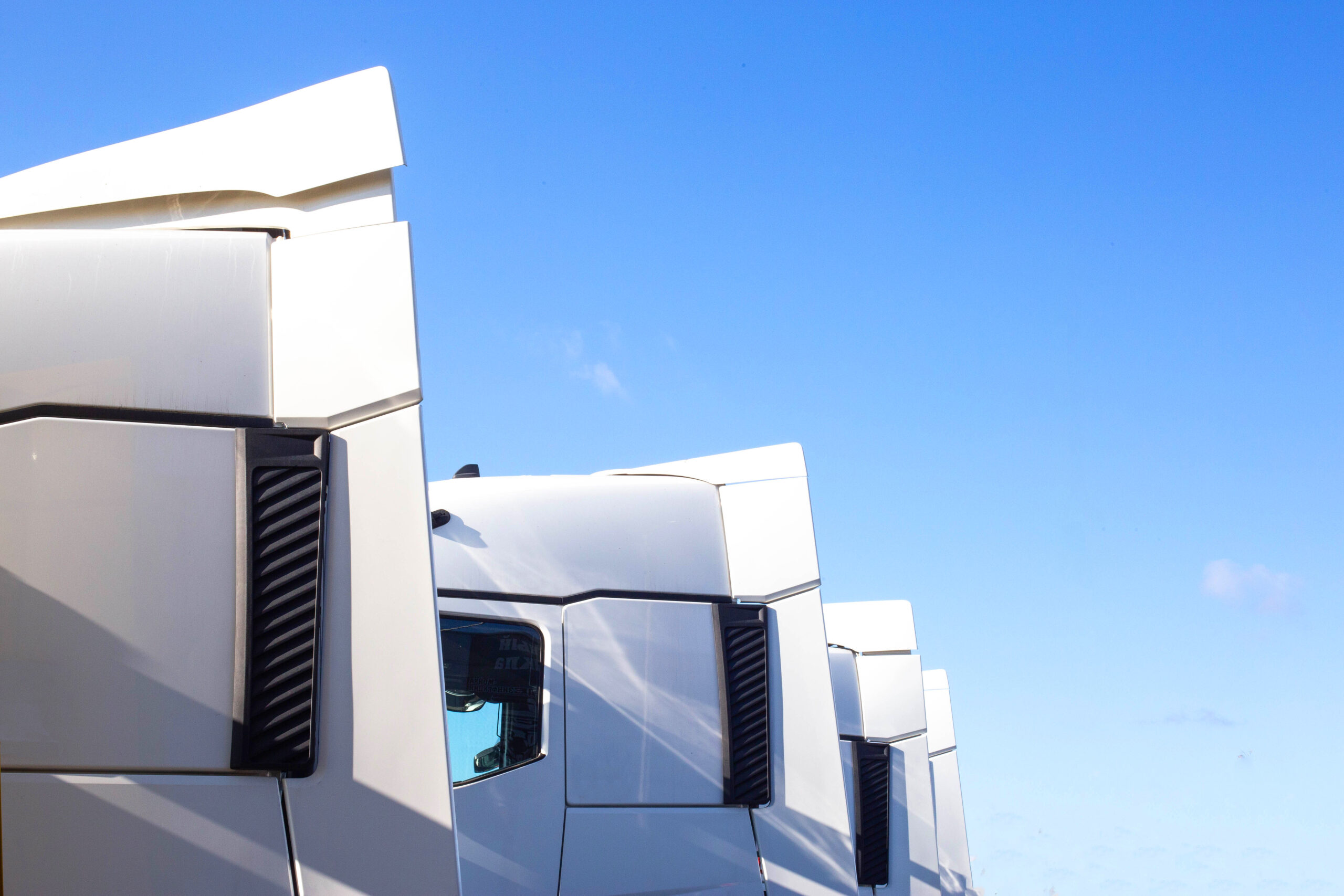
Intro
Fleet managers are always looking for ways to cut costs without compromising safety and service. Fuel costs for a single Class 8 truck can exceed $70,000 a year, so improving fuel efficiency is a top priority for fleet managers. One way to do that is to install semi truck aerodynamic kits on every truck.
Of the available energy in any big rig, 53% goes toward overcoming aerodynamic drag. Drag occurs through friction — when air contacts the surface of a moving truck — and through pressure, when airstreams separate as a truck moves through them. Semi truck aerodynamic kits can reduce both types of drag.
In this post, we’ll cover eight types of aerodynamic kits that can help fleet managers improve fuel efficiency and decrease fuel expenditures.
What Are Semi Truck Aerodynamic Kits?
Semi truck aerodynamic kits are add-ons that reduce drag at highway speeds. Some aerodynamic kits are low-tech accessories, while others use software to intelligently deploy anti-drag hardware and collect data about truck performance.
Kits may be available as part of an upgrade package from OEMs, or they may be after-market products. Fleet managers looking to maximize the benefits of semi truck aerodynamic kits might outfit trucks with both OEM and after-market products.
8 Types of Trailer and Semi Truck Aerodynamic Kits
On a Class 8 truck, the tractor accounts for the most aerodynamic drag (66%), followed by the trailer axle and wheels (18%), and trailer body (16%). The greatest fuel efficiency gains come from using aerodynamic kits for each of those areas.
Wheel Cover Kits
Available for both tractor wheels and trailer wheels, these kits reduce drag by preventing air from entering and exiting the wheel recesses. Wheel covers are easy to install, and some brands have quick-release technology for tire access.
Vortex Generators
Vortex generators are small triangular devices that attach to the trailing edges of the tractor and trailer, and the trailer roof edges, depending on the product. They reduce drag by preventing air streams from separating as the truck moves through them.
A study by The Green Truck Initiative, an independent Australian organization that evaluates the merits of clean vehicle technologies, found that vortex generators did provide some efficiency gains. However, the results of testing varied significantly, so the study could not quantify the benefits of vortex generators.
Aero Bumpers
Because the bumper is the first part of the truck that cuts through air, its shape can affect how air moves across the truck body. Smooth “aero” bumpers — also called drive fenders — help direct air away from the truck rather than over the cab.
Trailer Tails
Also called boat tails, trailer tails attach to the rear of the trailer to create a tapered end. First-generation trailer tails required drives to manually open and close them, which was a barrier to widespread adoption. Today, most trailer tails open automatically when a truck reaches a certain speed, although some still require manual effort to close.
Trailer Skirts
Trailer skirts are flexible panels that attach to the side edges of the trailer and reduce ground clearance. These devices reduce the amount of air beneath the trailer, which decreases the wake behind the wheels.
Chassis Fairings
Chassis fairings are similar to trailer skirts, but they attach to the cab, enclosing the fuel tank and other components that can cause drag.
Roof Fairings
Available as either OEM or after-market products, roof fairings are sloped attachments for the top of the cab that create a smooth transition to the trailer. Some roof fairings may be compatible with side panels that further reduce drag by narrowing the gap between the tractor and trailer.
While side panels can reduce drag, they can also interfere with low-speed maneuverability, so they may not be ideal for urban driving.
TruckWings
TruckWings is a fully automatic device that deploys at speeds above 52 mph to close the gap between tractor and trailer, reducing drag and trailer sway. When speed drops below 50 mph, the wings collapse flat against the trailer, so they don’t interfere with low-speed maneuverability.
TotalSIM US, an independent organization that tests aerodynamic devices, verified TruckWings’ claims of 3-6% fuel savings, using computational fluid dynamics. That benefit saves large fleets millions per year on fuel costs and reduces carbon dioxide emissions by 20,000 lbs/year, per truck.
The Best Way to Improve Aerodynamics
NACFE notes that there are many variables that impact the effectiveness of aerodynamic devices, and most testing occurs in “controlled, focused operating conditions.” That means results of testing might not align with the real-world ROI of certain semi truck aerodynamic kits.
The telematic technology that powers TruckWings collects and stores data for every TruckWings-equipped semi, so customers can see the benefits. To date, TruckWings has proven its value over nearly 624 million driving miles. And when you combine TruckWings with other aerodynamic devices, the fuel savings are even greater.
TruckWings isn’t just for diesel-powered trucks — it also helps electric trucks run farther on a single charge. That means TruckWings is an investment that can grow with fleets as they retire combustion engines and switch to greener technology. Learn more about how we can help you improve efficiency and reduce your carbon footprint.



